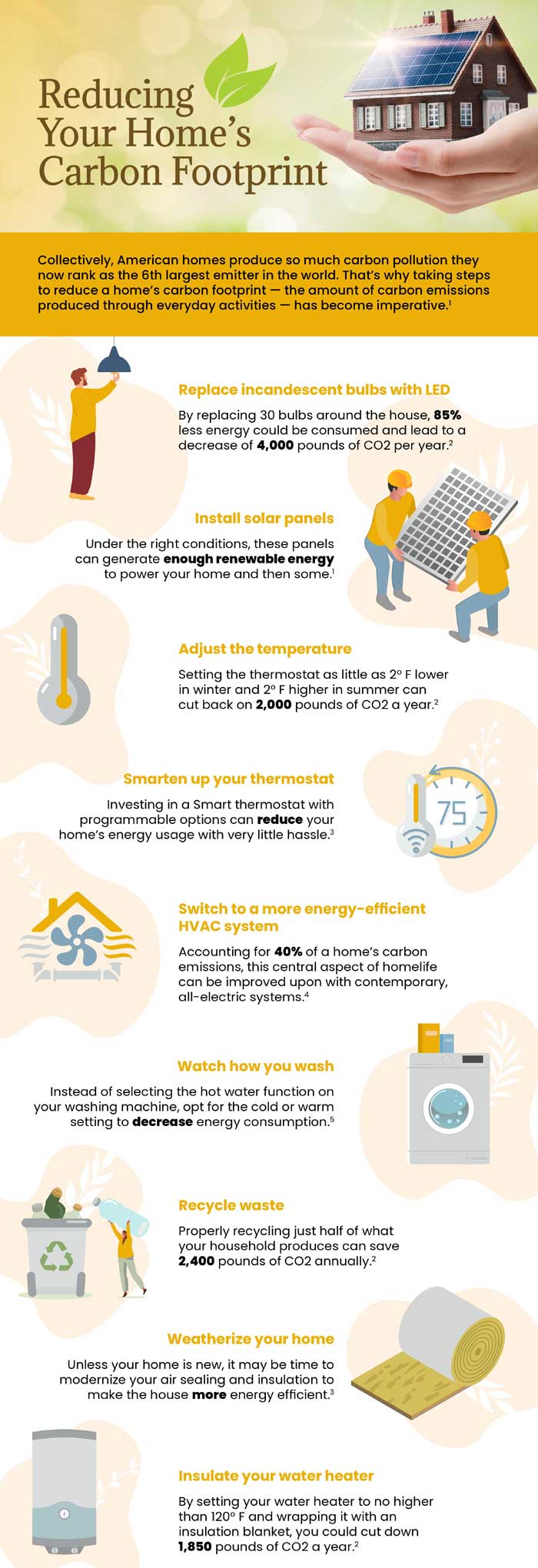
No matter how small they might seem, our actions have an impact. Plastic bottle that isn’t properly recycled may end up in the ocean. Having the thermostat set too high produces excess energy waste as well as a higher utility bill. The outdated, fossil fuel burning appliance kept way too long pollutes the air we breathe.
All of these negatively affect the environment and increase a household’s carbon footprint. Fortunately, there are plenty of ways to diminish the harmful emissions and pollutants we produce at home. Below are a few straightforward changes everyone can make to reduce their impact on the Earth.
First, what is a carbon footprint? Put simply, it’s the number of carbon emissions produced by everyday actions. From the food eaten to the car trips taken, everything involving the combustion of carbon compounds in production, delivery or operation contributes to this cumulative amount. On average, an American’s carbon footprint is approximately 20 metric tons, which is five times greater than the world average.
In terms of a home’s carbon footprint, there are two main sources: the amount of energy used to construct the home and the amount of energy needed to heat, cool, light, and power the home. The second grouping is referred to as operational energy, and there are many ways to address it. To start, it’s advised to adjust how the household appliances and HVAC system are utilized.
In the laundry room, for example, instead of selecting the hot water function on your washing machine, you should switch to the cold or warm setting. With advanced detergents capable of sanitizing clothes, this small change decreases energy consumption without affecting cleanliness. Similarly, you should set your water heater to no higher than 120°F and wrap it with an insulation blanket. Doing so can cut down on 1,850 pounds of CO2 a year.
Another way to decrease CO2 around the house is by switching to a Smart thermostat. These cutting-edge gadgets can be programmed to better manage your energy usage with very little work on your part. While programming it, set the thermostat as little as 2°F lower in winter and 2°F higher in summer. Although these two degrees might seem trivial, making this adjustment can cut back on 2,000 pounds of CO2 a year.
Lastly, although it isn’t as simple as adjusting a setting, homeowners can diminish energy waste through alternative, renewable energy sources. For instance, solar panels generate renewable energy and, under the right circumstances, could power a home completely. With tax credits and other incentives, these technologies are becoming increasingly more affordable and sought after by energy-conscious households.

Infographic Provided By The Solar Energy Company, Route 66 Solar.




